A6.1 Relation between policy goals and objectives: an example
A6.2 Dakar FSDS strategy: an approach
A6.3 Types of interventions at regional metropolitan, urban and local level
A6.4 An "urban" programme and an "urban distribution" subprogramme arranged by action plans
A6.5 Example of an action plan around a wholesale market
A6.6 Form 1: FSDS development programme for (name of city)
A6.7 Geographic programmes (form 2) and subprogrammes (form 3)
A6.8 Form 4: action plan: "(technical subject)"
A6.9 Form 5: A development programme arranged by action plans and sets of results: an example
A6.10 Form 6: set of results by interventions
A6.11 Examples of objectives of programmes, action plans, results and interventions
A6.12 Organizing an action plan by sets of results: an example of action plan A: "Urban Market Improvement"
A6.13 Compiling a set of results: an example
A6.14 From constraint analysis to policy implementation and monitoring
A6.15 Urban food supply and distribution policy: management structure

Policy Goal
"Improved access, within ten years, by urban low-income households, to stable supplies of low-cost good quality food, through more efficient, hygienic and environmentally sound food supply and distribution systems."
Objective 1
INCREASED CONSUMER, TRADER AND TRANSPORTER SATISFACTION WITH THE CONDITIONS OF URBAN FOOD MARKETS WITHIN THREE YEARS
Possible concerned units:
Municipality: Market Infrastructure, Transport, Municipal Police and Health Departments; Ministries of Commerce, Agriculture, Transport and Health; Interior (Police Department); Chambers of Commerce and Agriculture; Transporter, Trader and Consumer Associations.
Objective 2
PROGRESSIVE REDUCTION, THROUGH CLEANER URBAN MARKETS, IN FOOD CONTAMINATION AS REPORTED BY ROUTINE MONITORING AND SURVEILLANCE
Possible concerned units:
Municipality: Market Infrastructure, Health and City Garbage Collection Departments; Ministries of Health, Commerce and Transport; Market Trader and Consumer Associations.


Traders and shopkeepers need to follow good hygiene practices in handling and processing fish as well as keeping clean trading surroundings. Fish markets and shops need adequate facilities including water, ice, waste bins and cold stores.
|
Principle The programme is based on the recommendations from the identification of FSDS constraints and the long term analysis. It takes into account the current context marked by extensive poverty, devaluation, as well as liberalization, regionalization and decentralization programmes. This programme targets actions which can be realized rather than taking a hardline stance and retain elements which may be pertinent but not consistent with Senegal’s current capabilities. A logical framework The logical framework for defining the actions takes into account mutatis mutandis:
Global strategy Emerging from these principles is a global strategy based on:
Actions The actions will be selected on the basis of:
A targeted and participatory approach The approach is targeted because it focuses on the FSDS. Players outside of the city are not obliged to participate. The identification of public players (e.g. the state and local authorities) and private players (e.g. private operators and associations) makes it easier to define priority levels by their impact on the various sectors involved: investments, urban policy, organization, information and training. The participatory approach is based on the belief that unless players demonstrate genuine commitment to actions of direct concern to them, policies and programmes are unlikely to succeed. Source: Seck et al., 1997b. |
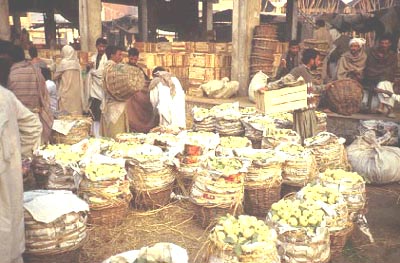
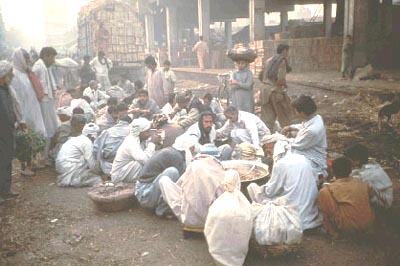
|
Regional level Food supply to cities
Health and environment
|
|
Urban level
Urban food distribution
Health and environment
|
|
Metropolitan level Food supply to cities
Urban food distribution
Health and environment
|
|
Local level Food supply to cities
Urban food distribution
Health and environment
|
Action Plan
Urban Market Improvement
Expected results in six years:
1. Infrastructure improved in five urban markets.
2. Hygiene and safety standards defined and enforced.
3. Effective market management.
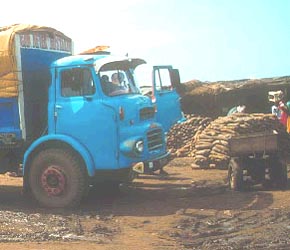
Markets and slaughterhouses need efficient waste collection systems to maintain hygienic conditions, avoid food contamination and ease traffic.
Action Plan
Food Retail Outlets in Low-Income Districts
Expected results in four years:
1. Four new open retail markets established.
2. Food traders and street vendors trained.
3. Appropriate regulations approved and enforced.
4. Consumers informed about fair trading practices and food hygiene.
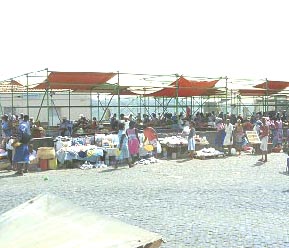
Low-income urban areas need simple retail markets. These have to be planned and provided with protection from the sun, wind, dust and rain.
Action Plan
Institution Strengthening
Expected results in two years:
1. Training programmes and material prepared on food supply and distribution.
2. Municipal technical staff trained.
3. Decision-makers sensitized.
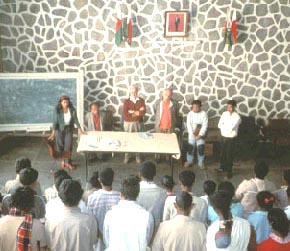
City and local authorities need trained staff capable of meeting the challenges of dynamic situations.
|
The issue The overall issue in Dakar is how to feed three million inhabitants 48% of whom are poor (middle class ruined by the recession). The FSDS environment may be described as follows:
The team in charge of the case study comprises:
The interinstitutional steering committee comprises the municipality, one central services representative in charge of trade, and traders’ and urban associations’ representatives. Elements of the diagnosis concerning fruit and vegetable supply The heterogeneity of the marketing channels (from the point of view of players and resources):
The modern direct marketing channel comprises a limited number of operators: from the producer to the consumer in 12 hours. On the other hand, the short channel (marketing of fruit and vegetables from production areas close to the cities) is fragmented: channels complicated by a large number of intermediate operations at all levels in a variety of places: farms, urban markets and central market. An attempt to group these channels together in a simplified, modern network failed (rural dispatch markets, producer markets: rural depots are the places where the produce is assembled, where price information is provided, where commercial transactions take place and from where goods are dispatched to the wholesale markets). As things stand at present, the product will have been negotiated ten times between the production area and the retail outlet by middlemen often fighting for survival under extreme financial and material conditions. The wholesale market This is a very large marketing space created to improve food marketing: reduced number of middlemen, smaller losses, improved pricing mechanism, improved hygiene, etc. Its general objectives are based on a vague idea of food supply problems. Its development is characterized by a gradual undermining of responsibilities. Opinions vary about the new functions to be assigned to it: allow grain trading; discontinue storage activities, introduce cold storage facilities, allow retail trading, etc. The sharing of the site among the middlemen obeys the rules of hierarchy, but space is bitterly disputed and there are more points of sale than the site can hold, with the result that they spill out into the nearby streets. At negotiating time the system operates as follows: as the delivery trucks are unloaded, major customers (supermarkets, hotels and hospitals) and major traders get a head start over the others, i.e. the middlemen usually working on six or seven products (typology is not an issue) inside or outside the depots, from the large-scale buyers to the small buyers at the end of the chain, e.g. the sellers on the urban markets, who negotiate small quantities. The wholesale market, symptomatic of food supply- related problems All kinds of difficulties have accumulated here, with the result that the market administrators seem paralysed:
Drop in efficiency due to:
Social conflict due to:
The scenario
Proposed strategy
Given the importance of the issues and the limited funding available, the administration wishes to take "critical" steps to ease the situation and is proposing excessively complex solutions.- the municipality floating loans for the recapitalization of wholesale market management companies. Measures must include liquidating the central supply body in favour of more efficient companies, managed by the private sector in partnership with the public sector; A five-point pilot recovery programme has, therefore, been prepared by the team to:
In discussions, the parties concerned stressed that:
|
|
Background and justification (maximum 500
words) |
|
|
General strategy (maximum 500 words) |
|
|
Objectives (maximum 500 words) |
|
|
Duration |
State the development programme expected overall duration (in
years and months). |
|
External policies and strategies |
What changes need to be proposed for national and sectoral
policies and strategies? |
|
Main components |
Title of each geographic programme and respective subprogramme
as well as their expected duration. |
|
Institutional responsibilities |
Programme monitoring committee: membership and
duties. |
|
Financial implications |
Provide an estimate of the overall costs (indicating, if
possible, the local and foreign currency components). |
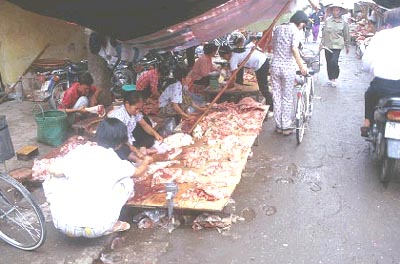
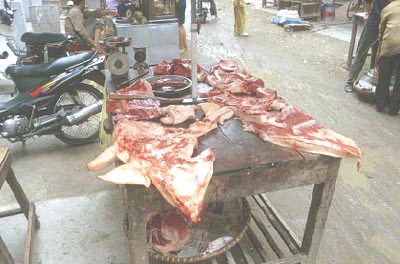
|
|
Form 2: Geographic Programe for "..." area |
Form 3: Subprogrammes "..." |
|
Background and justification (maximum500
words) |
|
|
|
General strategy (maximum500 words) |
|
|
|
Objectives (maximum500 words) |
|
|
|
Duration |
Expected duration of the geographic programme (in
months). |
Expected duration of the subprogramme (in months). |
|
External policies and strategies (maximum500
words) |
What changes need to be proposed for national and sectoral
policies and strategies? |
What changes need to be proposed for national and sectoral
policies and strategies? |
|
Main Components |
Title of each subprogramme and their expected
duration. |
Title of each expected set of results and the time required
for obtaining them. |
|
Institutional responsibilities |
Geographic programme monitoring institutions expected to
collaborate directly in the committee: membership and duties. List the
institutions expected to collaborate directly in the implementation of each
specific geographic programme. |
Name of leading institution and list of collaborating
institutions. List the institutions expected to collaborate directly in the
implementation of each general subprogramme. |
|
Financial implications |
Provide an estimate of the overall costs (indicating, if
possible, the local and foreign currency components). |
Provide an estimate of the overall costs (indicating, if
possible, the local and foreign currency components). |
|
Background and justification (maximum 500
words) |
|
|
General strategy (maximum 500 words) |
|
|
Objectives (maximum 500 words) |
|
|
Duration |
State the action plan's duration (in months) and any special
structure required for the short, medium and long term. |
|
Sets of results |
List the sets of results, which form part of the action plan
and their implementation time (in months). |
|
Lead institution |
|
|
Partner institutions |
List the institutions expected to collaborate directly in the
implementation of each action plan. |
|
Financial implications |
Provide an estimate of the overall costs (indicating, if
possible, the local and foreign currency components). |
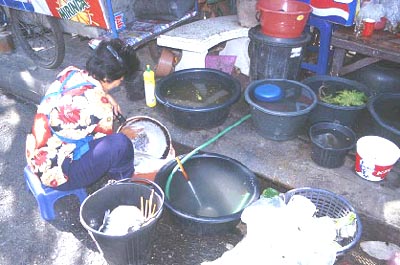

|
Action plan A: Urban market improvementSets of results: A1. Urban markets infrastructure improvedAction plan B: Development of retail food outlets in newly urbanized areasSets of results: B1. Open-space retail marketsAction plan C: Institution strengthening on FSDS mattersSets of results: C1. Training programmes and materialAction plan D: Improving rural-urban food transportSets of results: D1. Roads and food transport facilities |
Markets are often seen by local authorities only as a source of income.
|
Name of action plan: "..." |
Name of set of results: "..." |
|
Issues hoped to be resolved through the achievement in this set
|
Objectives of the set of results
|
|
(maximum 250 words) |
(maximum 250 words) |
|
Expected results |
Problems |
Main interventions |
Priority |
Beneficiaries |
Partner institutions |
Implementation time |
Prerequisites |
Additional requirements |
|
Description and justification of main results
expected. |
Description of special problems to which results are
linked. |
List the main measures needed to obtain the stated
results. |
The result is:
For urgent and priority results, give a brief justification. |
List the direct and indirect beneficiaries. |
List the public and private institutions expected to cooperate
with the lead institution in implementing the measures. |
State the time in months needed to achieve the results and
show how they are distributed over the short, medium and long term. |
List the prerequisites and give a short
justification. |
List the additional requirements and give a short
justification. |
|
FSDS development programme in (name of city)
|
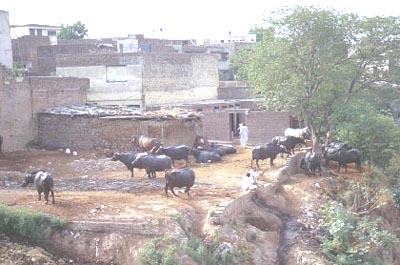
|
Action plan: "Urban market improvement" "In six years, all the existing urban markets will meet logistical, hygiene and safety standards as a result of sound, rational management by the traders’ associations." Action plan: "Training for technical staff employed by the central and local institutions" "Within four years, decisions and interventions by the central
and local institutions will be based upon a technically sound understanding of
FSDS problems in (name of city), through training and technical skill
enhancement". |
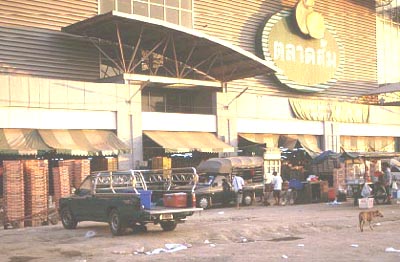
|
Results: Retail free markets "Food availability in the newly urbanized areas will be
improved, within five years, through the provision of appropriately equipped
markets areas". |
|
Intervention: Construction of a road linking point A (maize production area) to point B (rural assembly market) "In two years, all maize produced in zone A will reach the
assembly market in zone B for transfer to the city’s wholesale
market". |
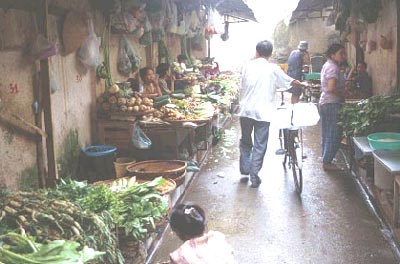
|
Less than 3 years |
From 3 to 6 years |
From 6 to 10 years |
|
Set of results A1: Physical improvement of urban
markets |
||
|
All the urban markets have adequate areas set aside for food loading and unloading. All the existing (ten) urban markets meet acceptable
logistical, hygiene andsafety standards, as a result of sound, rational
management. |
|
|
|
Set of results A2: Hygiene and safety |
||
|
Hygiene standards in all the urban markets significantly
improved through appropriate waste management and the provision of latrines and
water points. |
|
|
|
Safety standards for persons and products significantly improved in the urban markets through the provision of lighting and security systems. Traders using the markets appropriately informed about fire
prevention and management |
Improved practices for the unloading, processing and selling
of fish and meat products. |
|
|
Set of results A3: Market management |
||
|
Regulations for private market management and private management trials in three urban markets. Adequate knowledge of market management acquired by the
traders responsible for urban market management. |
|
|
|
All the existing (ten) urban markets are managed by private
traders' associations in line with the criteria for joint and private
management. |
||
|
Information available on traders using the markets and on
their commercial activities for appropriate market management. |
|
|
|
Tax revenue from urban markets increased by 30 percent as a
result of new procedures and improved financial management. |
||
|
Action plan: A - Urban market improvement |
Set of results: A3 - Market management |
|
|
Issues: The conditions under which commercial food activities take
place are extremely precarious and often cause high food losses, personal
insecurity and public health problems. This situation is mostly due to
inadequate maintenance and management. |
Objective: Urban food markets are clean and functional places where
traders and customers can safely meet. |
Lead institution: Financial implications: |
|
Expected results |
Problems |
Main interventions |
Priority |
Beneficiaries |
Partner institutions |
Implementation time |
Prerequisites |
Additional requirements |
|
Regulations covering private market management and private
management trials in three urban markets. |
Current management rules do not meet food trading requirements
and are unsuited to joint and private management. |
Proposal to amend the regulations and current legislation. Private management trials and evaluation of results in three
markets. |
Top priority. The reasons for the current state of the urban markets are
inadequate regulations and legislation which would not permit appropriate
management even if the political will existed. |
Direct: market managers. Indirect: all market users. |
|
Short term (regulations: one year) Medium term (management trials: four years). |
Political will. Authorization allowing joint market management. |
Special regulations and legislation for private urban market
management. |
|
Better knowledge of market management by the traders
involved. |
Traders have no experience in market management. |
Training for new market managers. |
Necessary |
Direct:
|
Ministry of Trade. |
Short term: (small number of markets). Medium term: (all markets). |
Political will. Authorization allowing joint market management. |
Traders must be interested and available. |
|
All the urban markets will be managed by private traders’
associations consistent with joint and private management criteria |
Urban markets currently managed by the municipality. This is
an inefficient management system, often the cause of problems. |
Private management trials extended to all markets. |
Necessary |
Direct: Market managers. Indirect: Market users. |
|
Short term: Joint management trials. Medium term: extension of joint management and private management trials. Long term: all markets will be under private
management. |
Authorization allowing joint market management. |
Sufficient degree of involvement by private traders. |
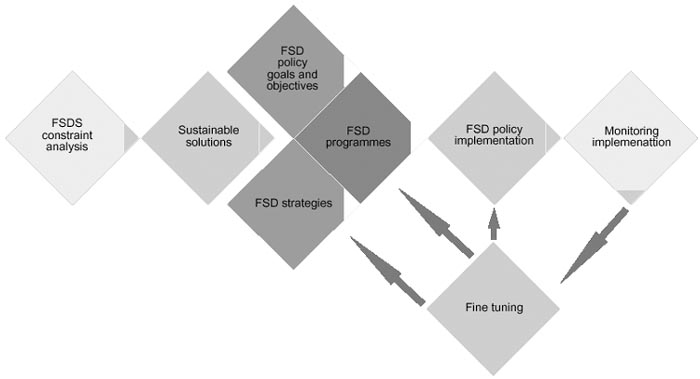
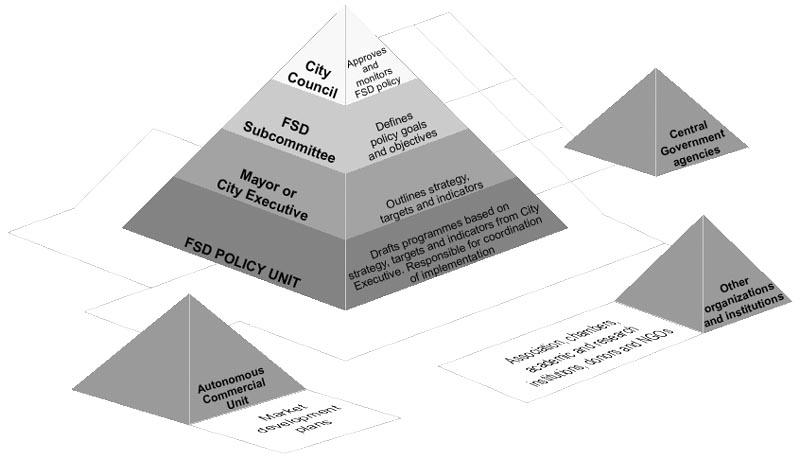
Source: adapted from Onumah, E. G. and Hubbard, M., 1999.